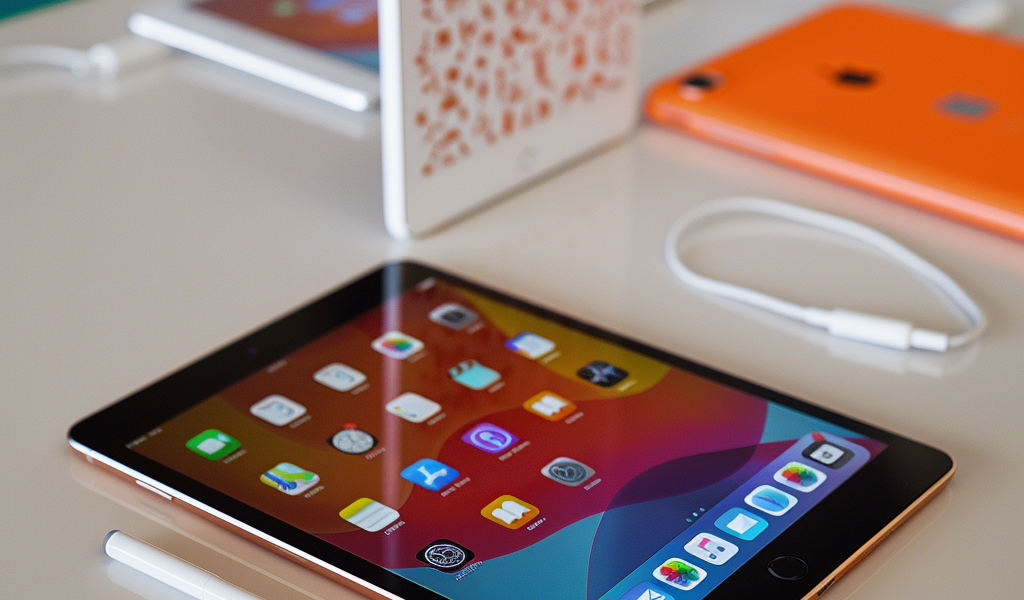Apple has recently made headlines with the launch of the refreshed iPad mini, featuring the powerful A17 Pro chip and enhanced support for Apple Intelligence. However, one notable absence from this announcement was the anticipated update to the base model iPad, which has left many consumers and tech enthusiasts puzzled. With the current iteration being over two years old, questions arise as to why Apple has chosen to leave this model without an upgrade.
The entry-level iPad, often referred to as the base model, was first introduced by Apple in 2017. The current version is the 10th generation, but the budget-friendly nature of this product line can be traced back to the 5th generation. Following the release of the iPad Air in 2013, Apple discontinued the iPad 4, creating a significant gap in the refresh cycle of the iPad lineup.
Initially, Apple’s goal with the new iPad (5th generation) was to cater to a broader audience, particularly in the education sector. The company stripped away unnecessary features, focusing solely on essential functions. This meant omitting the latest chipsets, laminated displays, and support for the Apple Pencil, while also limiting storage options to just 32GB. Priced at $329, it presented an attractive option for budget-conscious consumers.
Over the years, Apple has consistently refreshed this product line, introducing various enhancements. The 6th generation added Apple Pencil support along with a newer chip, while the 7th generation featured a larger display. The 8th generation brought fast charging and an updated processor, and the 9th generation included improved storage, a faster chip, and a Center Stage camera.
The most significant update occurred with the 10th generation, which adopted a modern design language, introduced vibrant color options, and transitioned to a USB-C port. However, despite these updates, the device still retained an older chipset, a non-laminated display, and lacked support for the Apple Pencil 2. Users were left with no choice but to utilize the first-generation Apple Pencil with an awkward adapter, as the Apple Pencil 1 relied on Lightning while the iPad 10 utilized USB-C.
With the current base iPad model being over two years old and equipped with an A14 chip that was already two years old at launch, the absence of a refresh raises eyebrows. Apple has typically followed a pattern of releasing new iPads with chipsets that are about two years old, so the lack of a new model this year is unusual.
One possible explanation for this delay in releasing a new iPad could be Apple’s strategic decision to avoid launching a product that does not incorporate Apple Intelligence. The company has heavily integrated Apple Intelligence into its marketing for new products, making it a focal point of their innovation narrative. If the iPad 11 were to be released, it would likely feature an A16 chip, which may not be compatible with the Apple Intelligence framework.
While Apple could potentially equip the new iPad with an A16 chip and 8GB of RAM, it seems unlikely that the company would want to optimize Apple Intelligence for lower-end hardware, especially if it would be limited to just one device in their lineup.
Currently, the base iPad is priced at $349, and with the absence of a refresh, many potential buyers are left wondering whether they should wait for an updated model or invest in the existing one. As consumers weigh their options, the anticipation for what Apple might unveil next continues to grow.
As Apple navigates its product strategy, the tech community remains eager to see how the company will address the gap in its iPad lineup. With advancements in technology and consumer expectations on the rise, the pressure is on for Apple to deliver innovative and competitive products that meet the needs of a diverse audience.
In the meantime, the refreshed iPad mini stands as a testament to Apple’s commitment to pushing the envelope in terms of performance and capabilities. For those seeking a powerful tablet experience, the iPad mini with the A17 Pro chip could be an enticing option, albeit at a higher price point.
As the landscape of tablet computing continues to evolve, Apple finds itself at a crossroads with its iPad offerings. The decision to forgo a refresh of the base model iPad may be strategic, but it also leaves room for speculation about the future direction of the product line.
With the holiday season approaching, consumers are keenly observing Apple’s next moves. Will the tech giant surprise its audience with an unexpected announcement? Or will the base iPad remain in its current state until the next scheduled update? Only time will tell, but one thing is certain: the world of technology is always in flux, and Apple is a key player in shaping its future.





